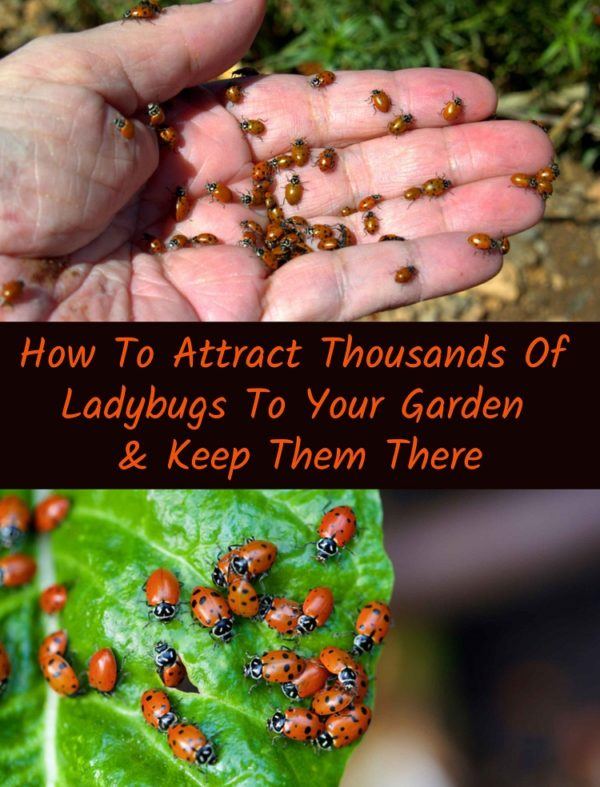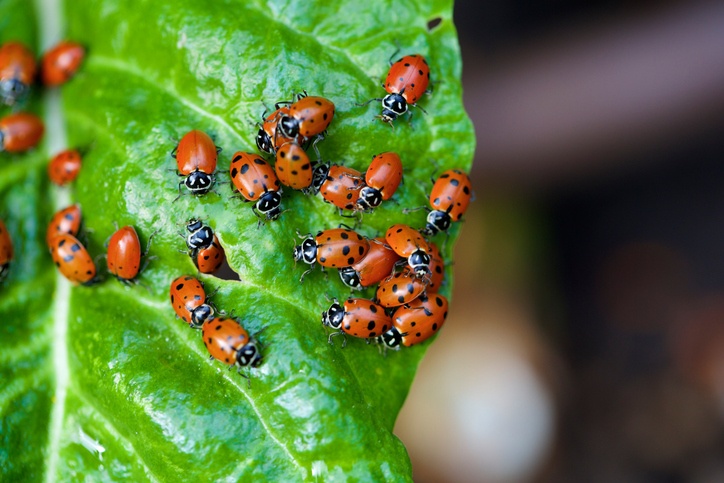
Not only are they cute, but ladybugs are counted as the number one beneficial insect in the garden.
They help with biological control of aphids and other garden pests. A welcome sight in any garden, their presence is an obvious indicator of its organic status.
Welcome them into your garden for pest control, and say goodbye to chemical pesticides.
Also known as ladybirds, these little insects are easily recognizable by their bright orange-red coloration and the tiny black spots. There are some without any spots and a few species in solid black or black with red spots too.
Their common name is a misnomer because they are actually tiny beetles, not bugs. They have chewing mouth parts as opposed to the piercing and sucking tubes of true bugs like aphids and bedbugs. And, when they are at rest, their thin wings are tucked under hard flaps known as elytra.
How Ladybugs Help The Garden
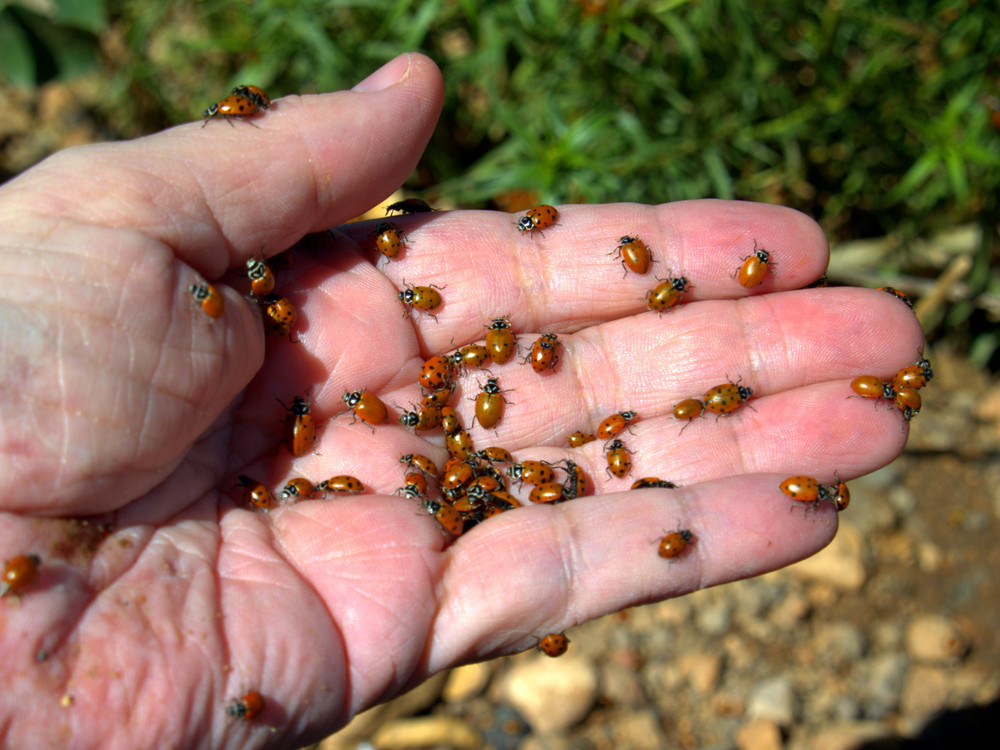
Except for a few herbivorous species that are known to cause damage to crops such as maize, spinach, and soybeans, ladybugs are generally harmless, feeding on small insects that infest the garden plants.
Aphids are their favorite meal, and that is what makes them beneficial to gardeners. These soft-bodied bugs suck the plant juices, especially from the tenderest parts of the plant such as the growing tips and developing buds, stunting growth and affecting fruit set.
Ladybugs are voracious feeders, gobbling up 40-50 aphids a day. A single adult bug probably eats about 5,000 insects and insect larvae in its lifetime. Each female produces around 1,000 eggs a season, which it lays close to food sources in batches of 10’s, 50’s, or even 100’s at a time.
That should give you a fair idea about their pest control potential, not to mention what their offspring can do.
The larvae that hatch from the eggs do not resemble the adults and are often mistaken for harmful insect larvae and killed off by gardeners. They have an alligator-like appearance with an appetite to match.
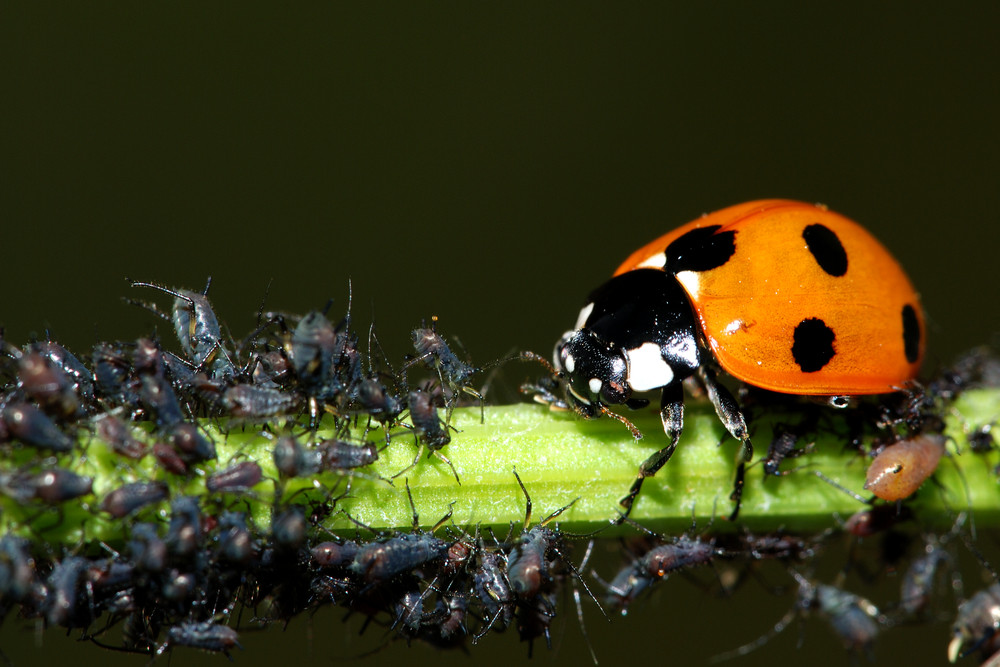
They feed on 400-500 aphids during the 2-3 weeks they before pupating and coming out as young beetles in another week or two.
Aphids are not the only prey of ladybugs and their larvae. The make short work of mealybugs, spider mites, and the eggs and larvae of a number of larger insect pests such as Colorado potato beetle.
The entire lifecycle of a ladybug is completed in about 5 weeks or less, giving them ample time to give birth to 5-6 generations from spring to early summer. Depending on their species, they aestivate in summer and hibernate through winter, often coming together in large numbers.
How To Attract Ladybugs To Your Garden
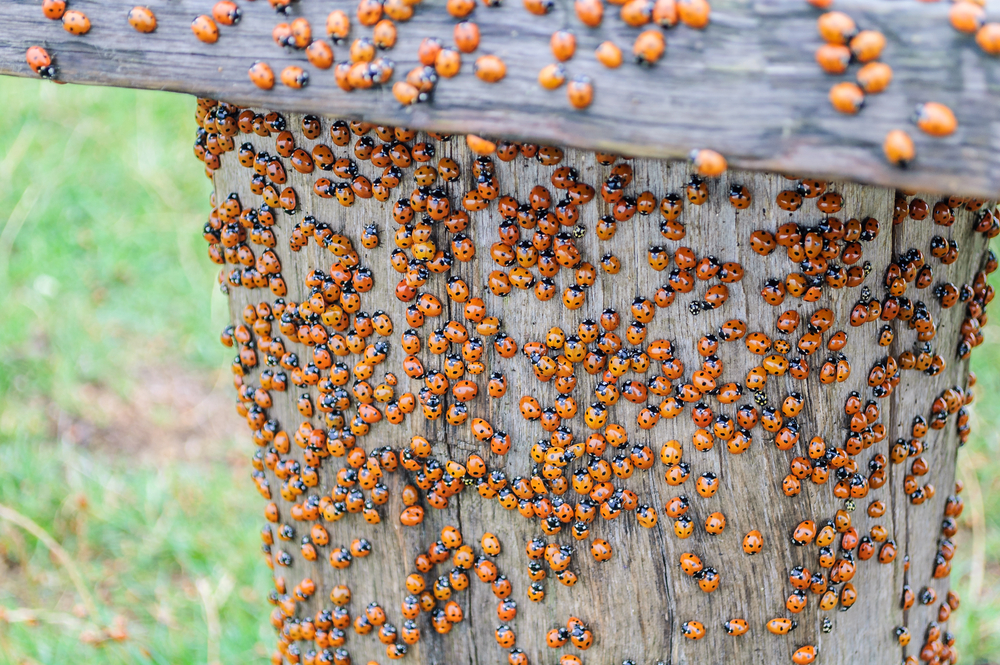
The pest control potential of ladybugs makes them an asset in any garden. They are found almost all over the country in small and large numbers; however, they come and stay in your garden only if the conditions are right.
The following measures may help attract them into your garden and entice them to make it their home.
1. Avoid chemical spraying
Ladybug beetles are not unduly affected by mild insecticides, but they may want to stay clear of sprayed areas as a matter of preference. If you stop all chemical control measures, including herbicides and organic pesticides, for at least 5-6 weeks, you might find some coming into your garden on their own.
This is more probable in spring when they come out of their hibernation looking for new feeding grounds.
2. Plant some aphid-prone plants
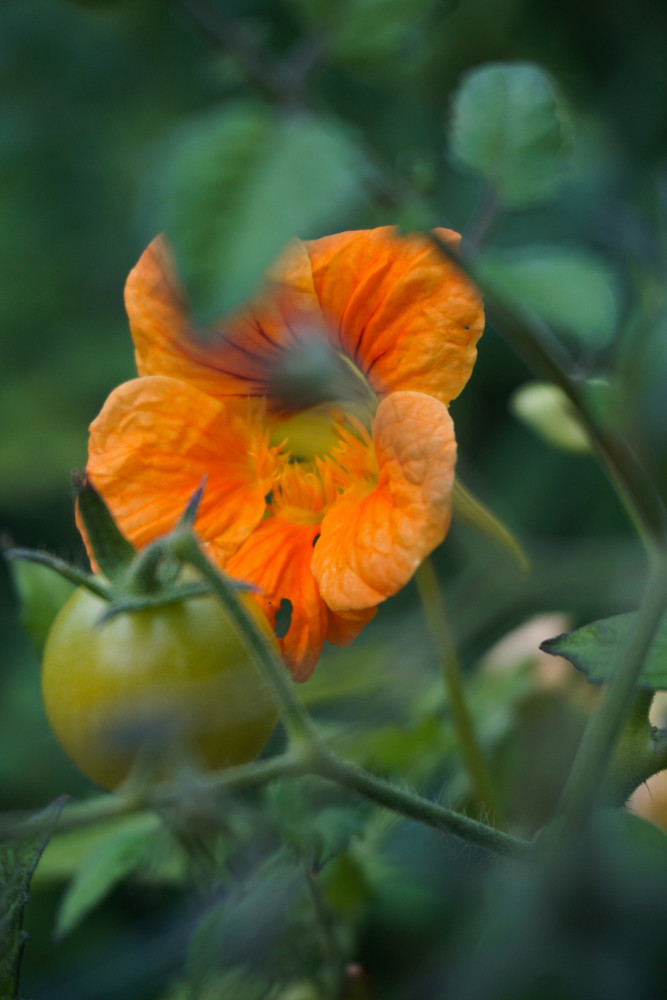
Roses are well known for being aphid-prone. Nasturtium and pot marigold are two other ornamentals that are prone to heavy infestation.
In the vegetable garden, cabbage, lettuce, radish, tomatoes and potatoes attract aphids; so do fruit trees. Plant some of these in your garden to provide a ready source of food for the ladybugs.
3. Plant suitable pollen and nectar plants
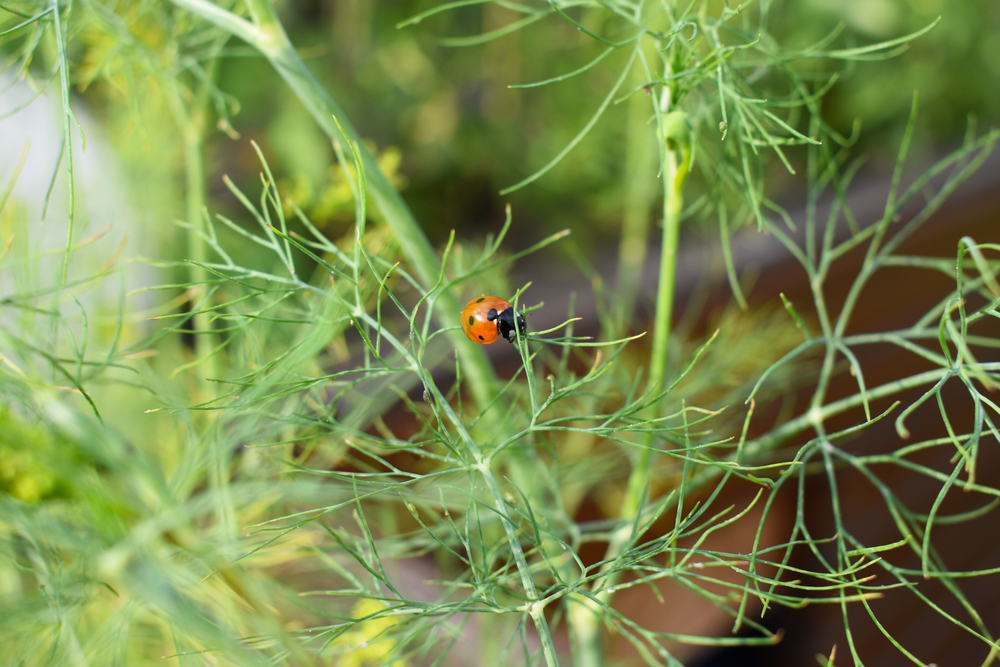
The beneficial ladybugs may be carnivorous, but they do like to have some pollen and nectar too, especially during their growth phase.
Flowers of the Umbelliferae family of plants seem to be ladybug magnets. They include dill, fennel, wild carrot, caraway and cilantro. The Aster family plants tansy and yarrow with their flat flower heads packed with tiny flowers full of pollen also seem to attract these beetles.
How To Buy & Release Ladybugs In The Garden
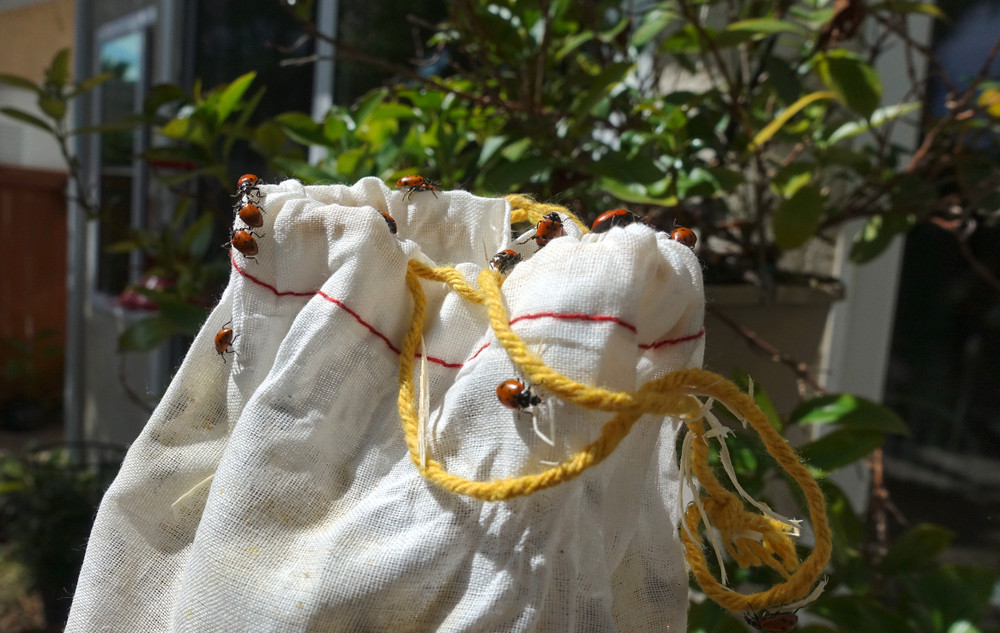
If you fail to attract local ladybugs to your garden, or it is taking too long for a small population to get established, you can purchase the beetles from here and release them in your garden.
However, you should ensure that your garden has been made insect-friendly before you bring in the guests, or they would just take off to better destinations.
Buying ladybugs is an inexpensive option for gardeners. While it is possible to breed ladybugs in bug farms, they often fail to follow the natural feeding patterns when released into the garden.
So the ones offered by bug dealers are always collected in the wild, usually from the aestivation and hibernation sites where they congregate in large numbers.
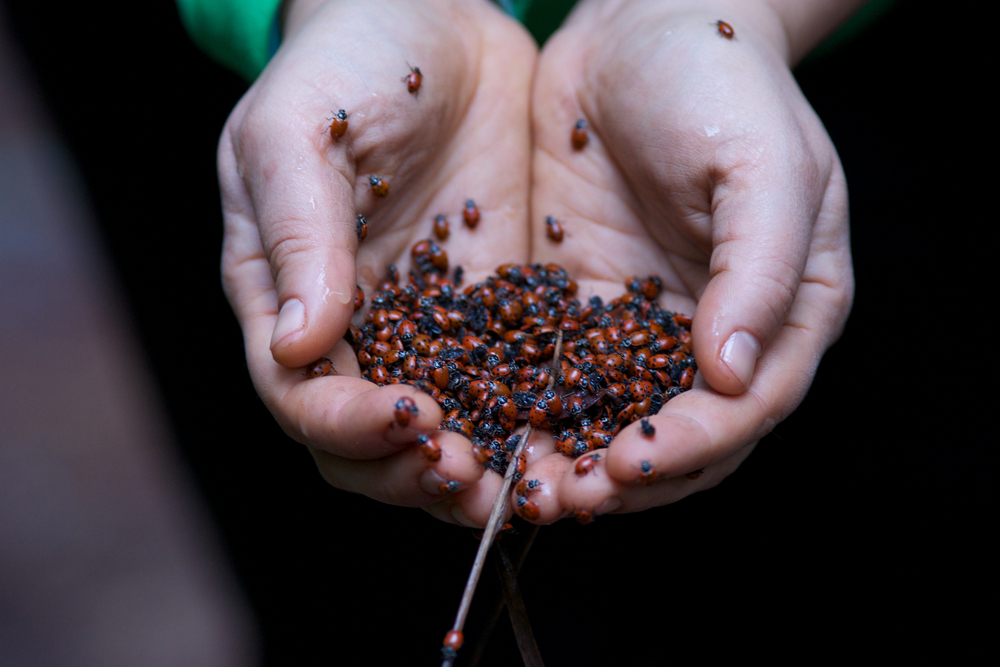
As soon as you receive the beetles, spray a little water into the bags and put them in the refrigerator. This helps to relieve the dehydration and overexcitement caused during shipping. The cool environment helps them to settle down as it gives a false sense of hibernation.
Ladybugs can be kept refrigerated for up to 3 months. They may become so inactive that it may seem as if they have perished. Some loss is to be expected, but most of them quickly recover on being introduced into the garden.
As in the case of attracting local populations, you should make sure that there are at least a few aphid-infested plants to release the ladybugs into. It is a good idea to water down the plants, knocking down some aphids from their perch, so that they can feed them on the ground. They appreciate the extra moisture too.
Late evening and early dawn are the best times to release ladybugs. The darkness and the cool temperature may keep them from flying away as soon as they are released.
On the other hand, sunlight prompts them to take flight immediately. If you release them in the evening, it gives them a whole night to settle down.
How To Coax Newly Introduced Ladybugs To Stay In Your Garden
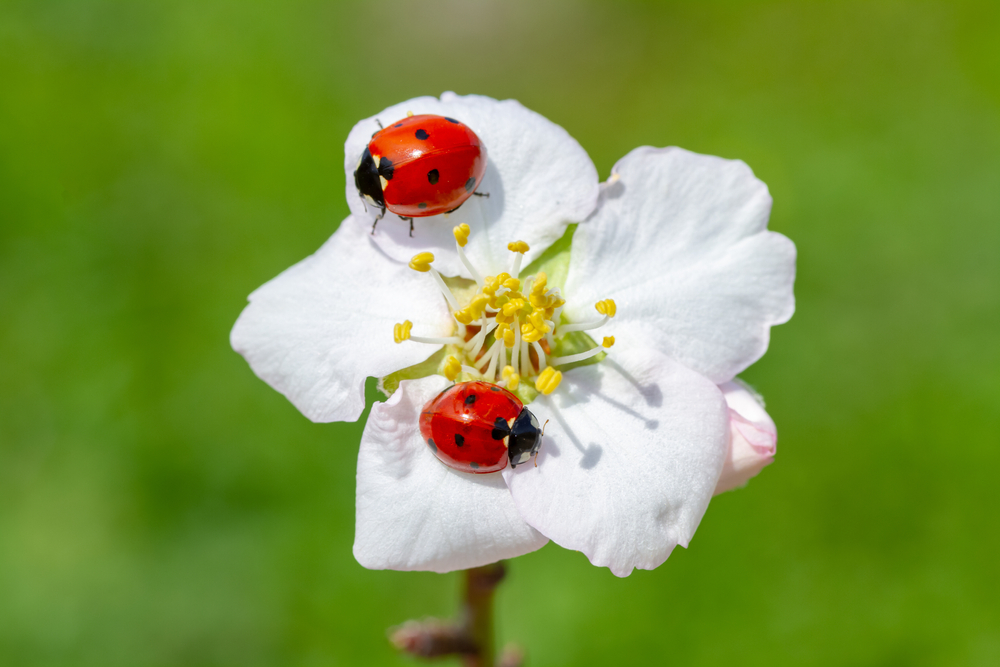
The whole bag of the ladybugs shouldn’t be released into the garden all at once. You don’t want them to take off en masse, leaving you empty handed. Take out a few thousands at a time and watch how they behave. They often stay around where they are assured of sustenance.
If they seem to be heading for the neighbor’s garden, check out what kinds of plants attract them. Perhaps growing the same plants may keep them in your garden.
Some people find that spraying them with a sugar solution, such as soda diluted with equal amount of water, helps to keep them in the garden long enough to lay at least a batch of eggs.
The sugar drying on the beetles may stick their outer wings shut and temporarily disable their flight. The effect wears off in a week or two, so no lasting damage is done.
Others use cloches to cover aphid-infested individual plants after releasing the beetles on them. If the infestation is heavy, the guests may happily stay put and feed on them, depositing some eggs in the meanwhile.
Several species of beneficial ladybugs, but the ones available for purchase are the American native Hippodamia convergens and the Asian species Harmonia axyridis. Both are aggregating types, which makes it easy for dealers to collect them in the wild.
Both species are capable of pest control, but the Asian species are considered a more aggressive predator. However, investing in the native beetles may be better for your garden and the environment. Also, Harmonia ladybugs prefer warm spots for aggregating and are known to swarm to homes, looking for warmth.
Ladybugs Are A Gardeners Best Friend
Once you see the work that these little beetles can do, you will be amazed and want to make the conditions just right in your garden to keep them around for a very long time!
Pin This To Save For Later
